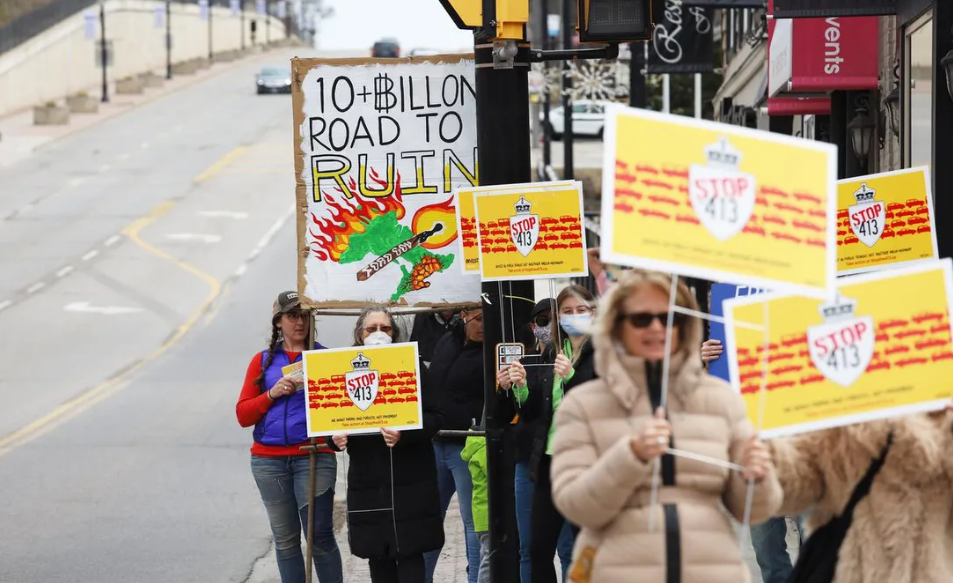Despite the election outcome, the fight to stop Highway 413 is far from over

Demonstrators in Caledon protest against the provincial government’s planned Highway 413, on April 23. GRAEME FRISQUE
From the Toronto Star, June 24, 2022
By
The controversial plan to build Highway 413 north of Toronto was a key issue in the recent Ontario election. The opposition parties vowed to cancel the project if they formed government, while the Progressive Conservatives promised to “get it done.” Now, given the election outcome, it would be reasonable to think that the highway is a done deal. But that’s not so — not even by a long shot.
Ottawa has designated the project for a review under the federal Impact Assessment Act. This fall or winter, it will have to decide whether to conduct a full environmental assessment. We certainly hope it does.
There are three main issues that are clearly in federal jurisdiction: species at risk, Indigenous right, and climate change.
First, the highway would endanger many federally listed species at risk, like the western chorus frog, a tiny fish called the redside dace, and the rapids clubtail, a dragonfly so endangered in Canada that they can only be found along four rivers, including the Humber and Credit rivers — both of which Highway 413 would cross.
Ottawa has a responsibility to protect species under the Species at Risk Act. And given Ontario’s poor track record on endangered species, federal intervention is essential.
Second, the highway would travel through the traditional territory of multiple First Nations and imperil numerous Indigenous archeological sites. Both the Mississaugas of the Credit First Nation and the Huron-Wendat Nation have asked for a federal environmental assessment. According to the latter, “the likelihood that Huron-Wendat archeological or burial sites will be disturbed and damaged by the proposed project is significant.”
The Huron-Wendat Nation also said it has not been adequately consulted and accommodated by Ontario, and does not have confidence that it will be adequately consulted and accommodated going forward. Ottawa had best take that seriously.
Third, there’s climate change. Highway 413 would add an additional 17 million tonnes of greenhouse gas emissions by 2050 — the year Canada is aiming to be carbon neutral.
Climate change is another area that the Ontario government has essentially turned its back on. In fact, the provincial government even made a ludicrous claim that building the highway would reduce emissions! The opposite is true — more highways draw in more cars, which means more emissions. It’s been witnessed around the world.
The provincial government doesn’t have a good track record when it comes to environmental protection on the whole. In fact, leaked documents show that the province opted for the most environmentally destructive route for the highway to protect a subdivision that hasn’t been built yet.
Premier Doug Ford campaigned as a changed man, ready to rethink and reassess. And when it comes to the Greenbelt at least, he has changed course before. Perhaps in the face of the weight of evidence and a massive public outcry, he’ll reassess this project too.
But if not, Ottawa has the authority and responsibility to ensure Highway 413 gets a thorough environmental review at the very least. They need to take that responsibility seriously.
Read the article here









Leave a Reply